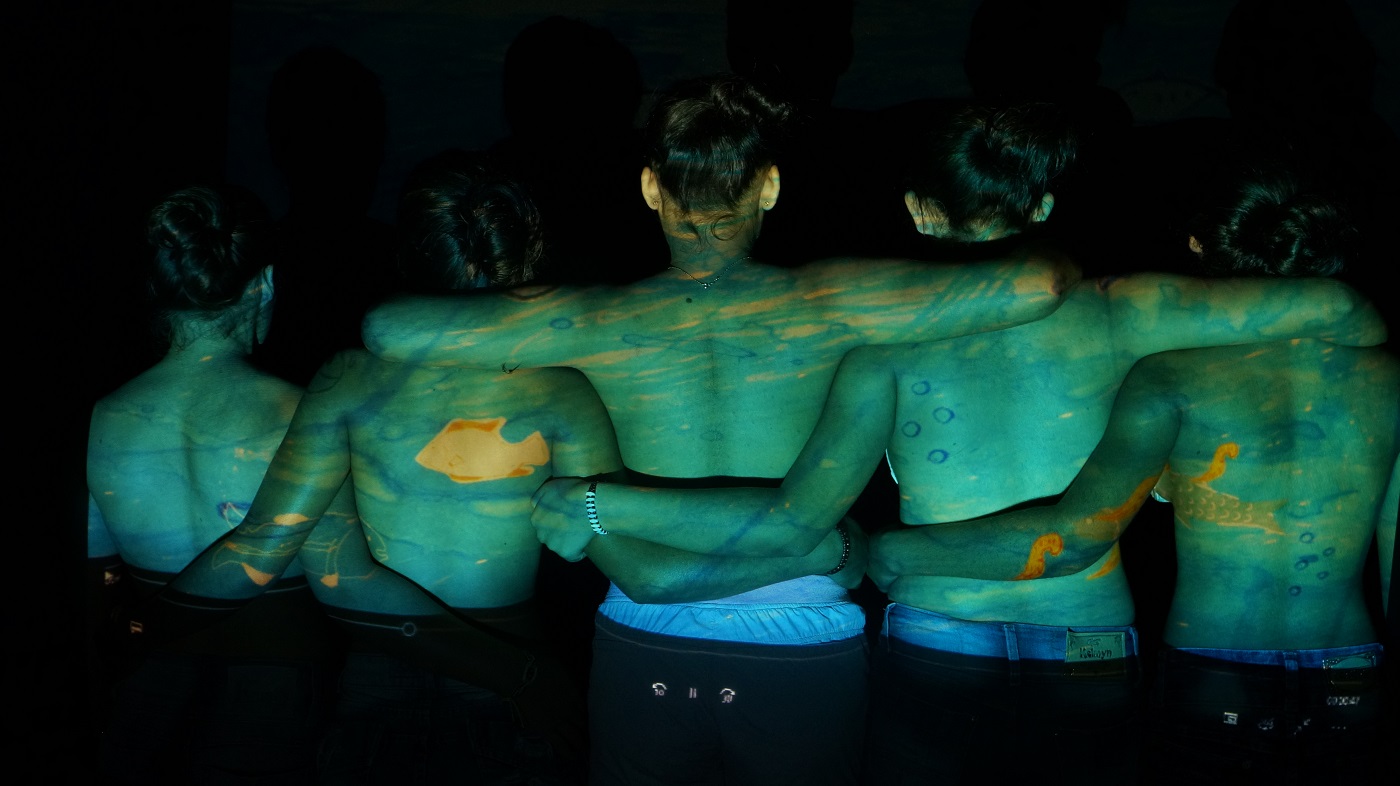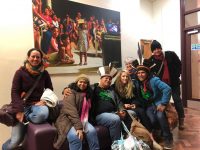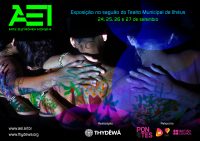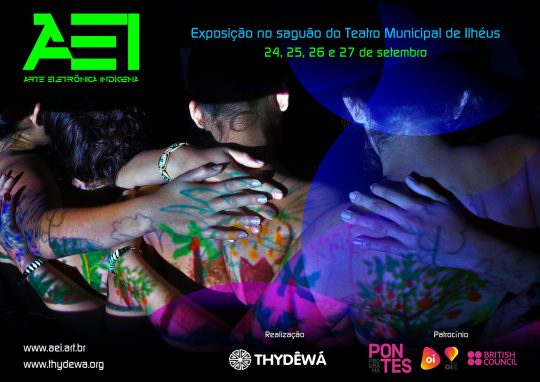
Grand prize of the European Commission honoring Innovation in Technology, Industry and Society stimulated by the Arts
Arte Eletrônica Indígena – www.aei.art.br
Thydêwá
Honorary Mention
The Arte Electrônica Indígena (AEI) project was designed and executed by the NGO Thydêwá. It consisted of a series of ten short artistic residencies in indigenous communities in the Brazilian Northeast in order to cocreate works of electronic art. These were exhibited to the public at the Museum of Modern Art, Salvador da Bahia, in August 2018 and have since toured the indigenous communities themselves.
The participating artists came from Brazil, Boliva, and the United Kingdom, and the indigenous communities are those that make up the network of indigenous “points of culture” with which the NGO works. The purpose of the project was to stimulate intercultural exchange through artistic cocreation between indigenous and non-indigenous people, to reduce prejudices on all sides through collaboration, and to challenge mainstream perceptions of indigenous peoples as “traditional” or “backward”, and therefore not capable of engaging with new, high-tech forms of art.
The resultant artworks marry the concerns and practices of the indigenous communities with electronic and digital technologies to produce highly original results. The strong interactive dimension to many of the works demands that the spectator engage with them, thus breaking down prejudices in the gallery setting also.
Five of the most engaging works of electronic art presented were:
*The Earth that is Us*, Bruno Gomes and the Karapotó Plak-ô community, digital body painting.
*The Voice of the Sea*, Óscar Octavio “Ukumari” and the Pataxó de Barra Velha community, electronic sound art with found materials.
*The Voice of the Pankararu Earth*, André Anastácio, Alberto Harres and the Pankararu community, electronic sound art with local ceramics.
*Pulsation*, Aruma – Sandra de Berduccy and the Camacã Imboré community, electronic textile art.
*The Hãhãhãe Wishing Tree* Paulo César Teles, Rosana Bernardo and the Pataxó Hãhãhãe community, movement sensitive sculpture with found materials.
Credits
The AEI project was designed by the NGO Thydêwá.
Core project team:
Sebastián Gerlic, director of Thydêwá, project coordinator, curator
Tiago Tao, executive producer, curator
Anna Campagnac, local production, coordinator for collective processes
Helder C Jr, graphic designer, website
Thea Pitman, curator
Artists and Indigenous communities:
Bruno Gomes, Mulungu, Ceará, Brazil, and the Karapotó Plak-ô community, São Sebastião, Alagoas
Óscar Octavio ‘Ukumari’, Santa Cruz de La Sierra, Bolivia, and the Pataxó de Barra Velha community, Porto Seguro, Bahia
André Anastácio and Alberto Harres, Rio de Janeiro, Brazil, and the Pankararu community, Tacaratu, Pernambuco
Aruma – Sandra de Berduccy, Cochabamba, Bolivia, and the Camacã Imboré community, Aldeia do Cachimbo, Bahia, and in particular Mangtxay Camacã Imboré
Paulo César Teles and Rosana Bernardo, Campinas, São Paulo, Brazil, and the Pataxó Hãhãhãe community, Pau Brasil, Bahia
Jury Statement
The jury found this initiative to be a strong example of partnerships that center the voices of indigenous communities and amplify their perspectives as part of contemporary identity and collective heritage. Indigenous people are among the front-line stewards of the environment and their continual contributions to modern cultural and ecological systems are critical inputs for innovation. In hopes of further supporting these peoples’ roles in the innovation ecosystem, Arte Eletrônica Indígena demonstrates best practices for creative capacity building in rural indigenous communities.
This project brings to attention the cultural symbols and creative output of eight indigenous villages in the Brazilian state of Bahia through supporting their close collaborations with artists from Brazil, Bolivia, and the UK. The jury recognized the importance of the impetus for this intercultural partnership coming from the non-governmental organization Thydêwá, a group of intercultural individuals that has been working closely with these communities for 17 years to promote positive social transformation. The dialogue created by these art residencies presents a powerful counter-narrative around and a show of meaningful resistance to the traditional integration-focused programs that all too often attempt to homogenize the artistic traditions and productions of historically-marginalized peoples. By incorporating digital tools into new creative formats, the residencies situate electronic art as a compelling medium for collaborative creative processes and proposes the crucial role indigenous people can and should play in the continued development of the global technological ecosystem. This multi-layered artistic engagement urges meaningful dialogues around the practical uses of technology to activate collaborative creative processes—and this can enrich digital practices for all.


